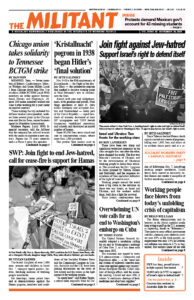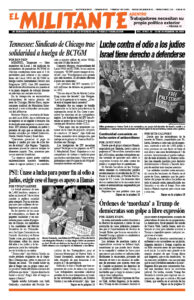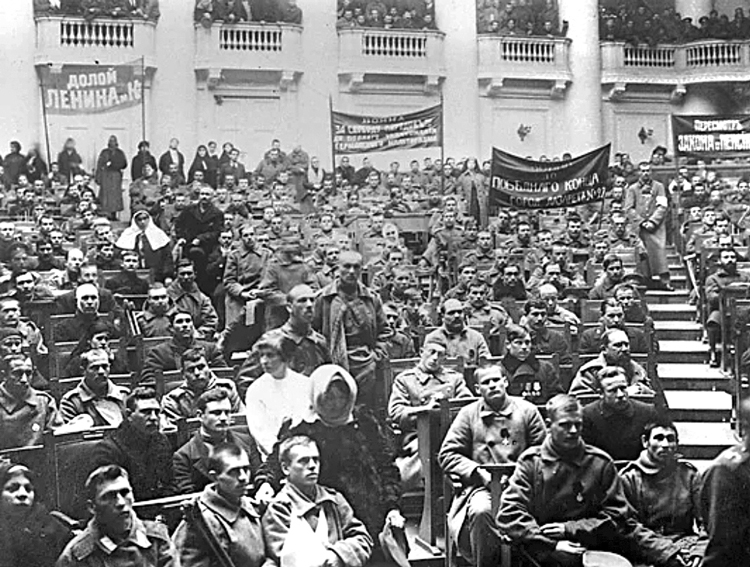The French edition of The Turn to Industry: Forging a Proletarian Party by Socialist Workers Party National Secretary Jack Barnes is one of the November Books of the Month from Pathfinder Press. It explains that working people will only truly discover our worth as we come together to use our collective power to change society, leading all those exploited and oppressed by capital to challenge the capitalist rulers. It traces the kind of working-class program, composition and course of conduct needed by any party seriously fighting to be revolutionary in the imperialist epoch. That is especially so in the United States as the fight for workers power and socialism faces the wealthiest and most ruthless ruling class in history. The excerpt is from Barnes’ introduction to the book. Copyright © 2020 by Pathfinder Press. Reprinted by permission.
The Turn to Industry: Forging a Proletarian Party is about the working-class program, composition, and course of conduct of the only kind of party worthy of the name “revolutionary” in the imperialist epoch. The only kind of party that can recognize the most revolutionary fact of this epoch — the worth of working people, and our power to change society when we organize and act against the capitalists and all the economic, social, and political forms of their class rule.
This book is about building such a party in the United States and in other capitalist countries around the world. It is about the course the Socialist Workers Party and its predecessors have followed for one hundred years and counting.
“We will not succeed in rooting the party in the working class, much less in defending the revolutionary proletarian principles of the party from being undermined, unless the party is an overwhelmingly proletarian party, composed in its decisive majority of workers in the factories, mines, and mills,” emphasized resolutions adopted by the SWP convention in 1938. The party must become “an inseparable part of the trade unions and their struggles.” It must be an inseparable part of daily battles waged by the working class and other exploited producers to defend ourselves and our families against the brutal consequences of capitalist oppression.
That orientation — the course of the Bolsheviks under V.I. Lenin in leading the workers and peasants to power in October 1917 — has been our strategic course since a communist party was founded in the United States two years later, along with others affiliating to the new Communist International. The new party had one sole aim — emulating the Bolsheviks’ example. The SWP is the direct descendant of that party.
With the rise of industrial capitalism some two hundred fifty years ago, conflicts between workers and employers increasingly took on “the character of collisions between two classes,” explained Karl Marx and Frederick Engels in the Communist Manifesto, the founding program of the revolutionary workers movement. In face of the capitalists’ cutthroat drive for profits, workers have no choice but to “club together in order to keep up the rate of wages” and resist employers’ push to extend the workday and speed up production, with cold disregard for our health and safety. Inevitably, workers “begin to form combinations (trade unions)” against the employing class.
Some two centuries of class-struggle experience have confirmed that such “combinations” take many initial forms — from acts of resistance on the job; to battles against company lockouts; to strikes, organizing drives, and campaigns to expand union power. …
Over the years since the SWP made what has become known as the turn to industry, the imperialist order has sunk into deeper and deeper crisis: declining profit rates; intensifying global capitalist competition; stagnation in capital investment to expand plant, equipment, and industrial employment; mounting pressures toward currency wars; and unending military conflicts. Workers and our families face attacks by the capitalist class, its government, and its Democratic and Republican parties, with their “socialist” wings, on our living and job conditions — on our very life and limb. …
The necessity — and opportunities — for working people, nonunion and union alike, to be bold, to organize ourselves, and to mobilize mutual solidarity have seldom been greater. And necessity is pushing us in that direction. The measure of our success will often not initially be the formation of new and powerful unions fighting for the interests of our class.
It will be the experience and confidence workers gain as we act together.
It will be our increasing political knowledge and consciousness of the employers — and of ourselves.
It will be our pride and our readiness to stand up and be counted as we act together as part of a common class.
And it will be our deeper understanding, explained by Engels as far back as 1847, that “communism is not a doctrine but a movement; it proceeds not from principles but from facts.” It is the line of march of a class — the working class — toward political power. …
In the two great socialist revolutions of the twentieth century — in Russia in 1917, and then some four decades later in Cuba — the centrality of trade unions and the fight to transform them came largely after, not before, the struggle for workers power. But revolutionary-minded workers can’t bank on that pattern being repeated in today’s world, in which both the level of industrialization and the size and weight of the working class are much larger, not only in imperialist countries but also many others.
One thing we know for sure, however, is that a socialist revolution in the United States is inconceivable without organizing our class to fight to build unions and to use union power to advance the interests of working people here and around the world. And the forging of a proletarian party — a revolutionary political instrument of the working class, aimed above all at changing which class is exercising state power — is impossible without participating in that struggle.


